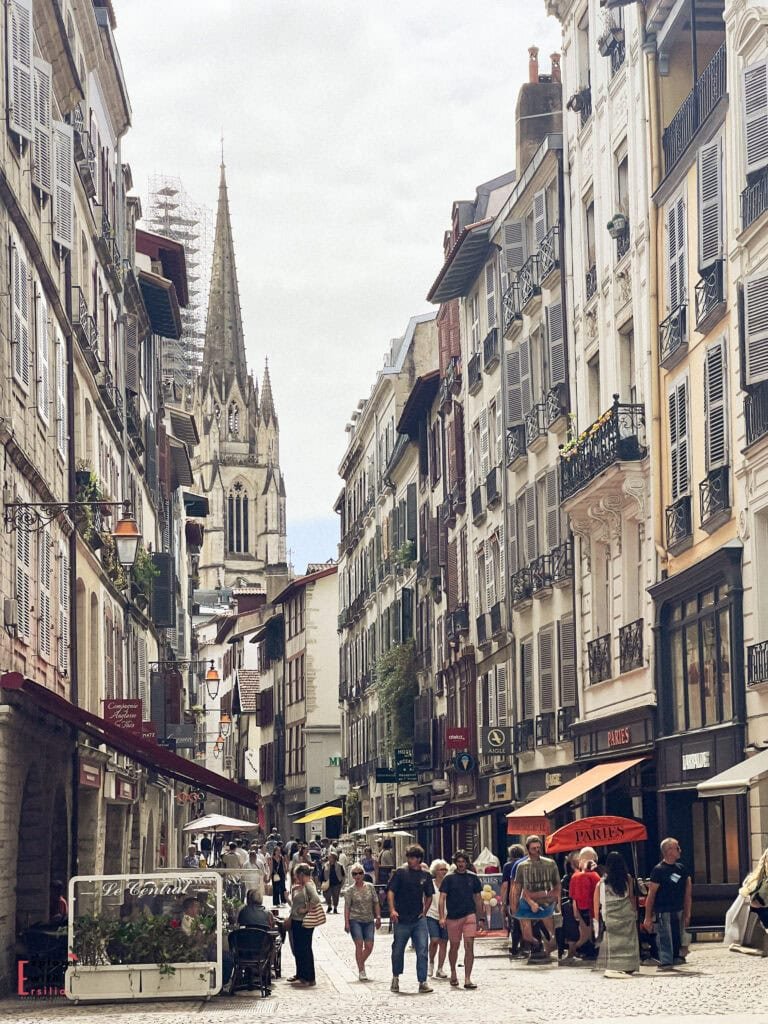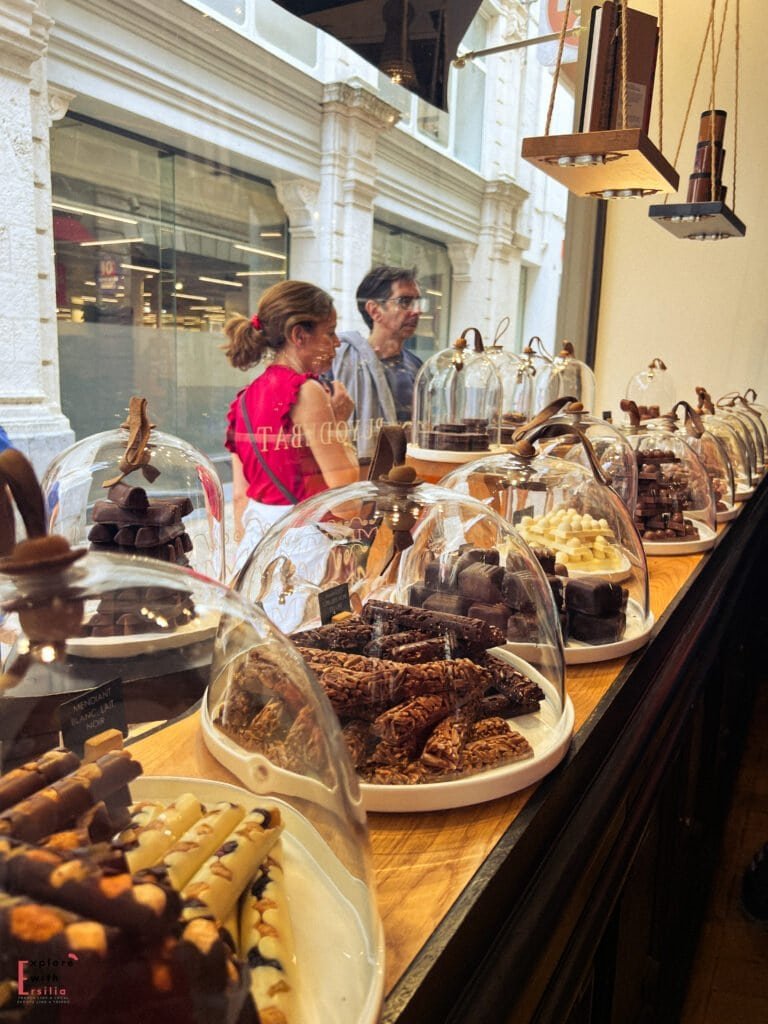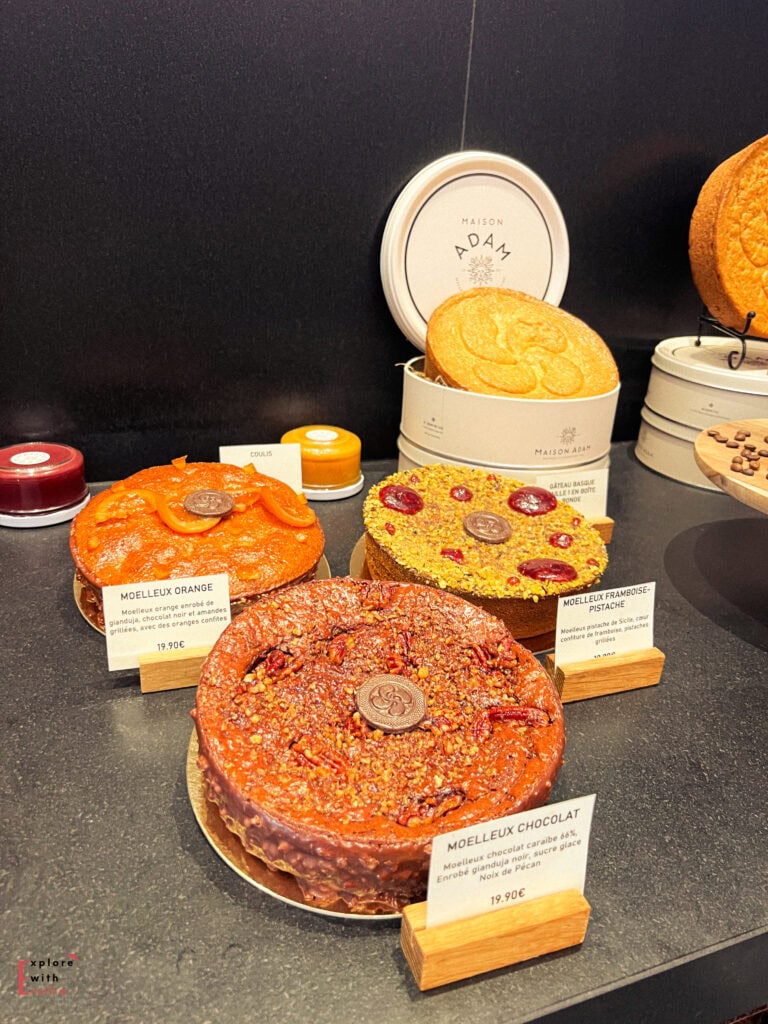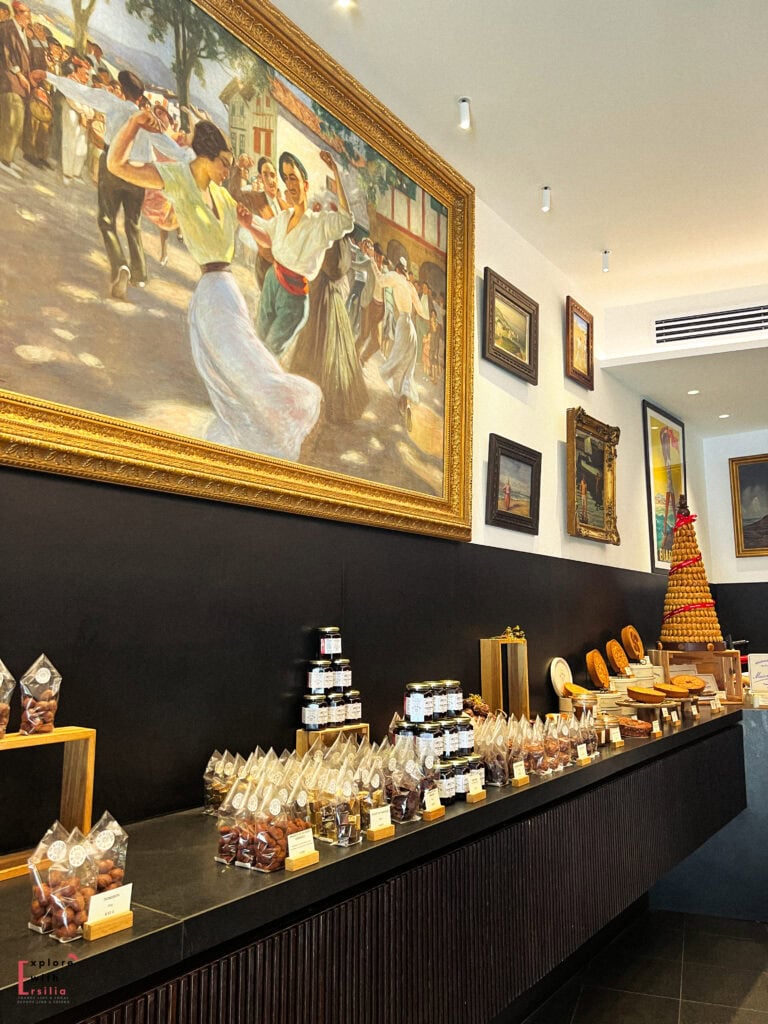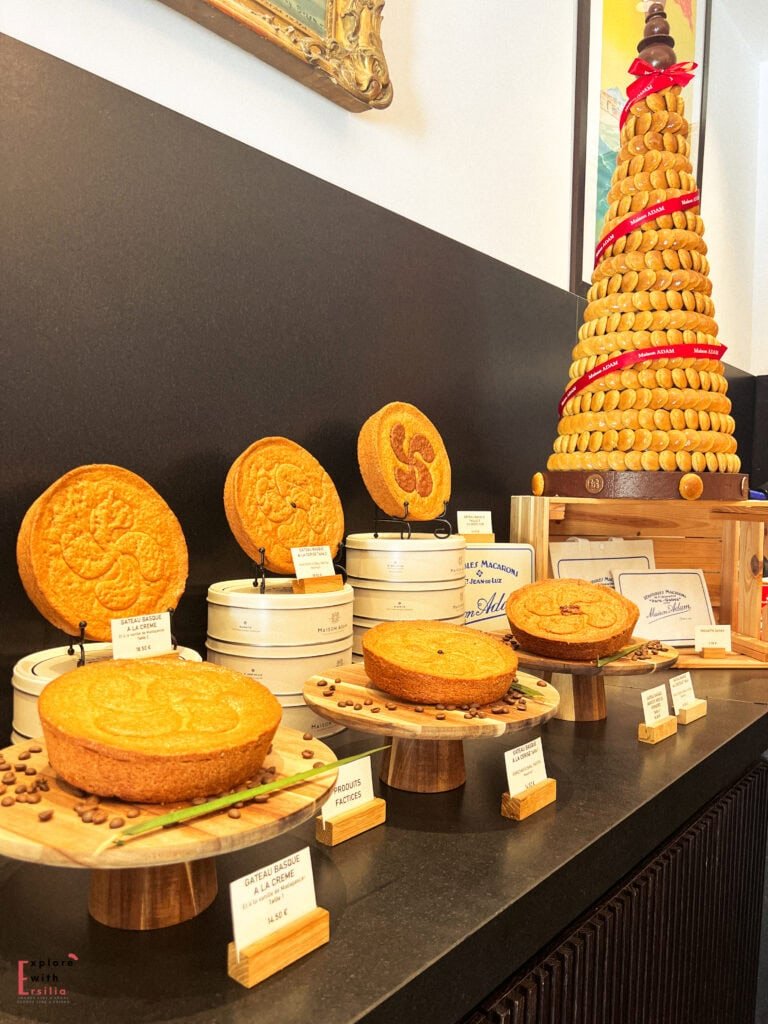Explore with Ersilia contains affiliate links and is a member of the Amazon Services LLC Associates Program. If you make a purchase using one of these links, I may receive compensation at no extra cost to you. affiliate links are how we keep this content free. A huge thanks if you use these as it helps a lot! See the Full Policy for more information.
When I first moved to Toulouse after my Erasmus years in France, I was immediately struck by the region’s food culture. Coming from Romania, the southwestern French traditions of lengthy apéritifs with platters of charcuterie, cheese, and small bites paired with local wine was a delightful discovery. But it wasn’t until my recent trip to the French Basque Country that I finally understood the origins of many traditions I’ve come to love in my adopted home.
This question struck me particularly during my visit to Saint-Jean-de-Luz. As I sat at a small pintxos bar with rain tapping gently against the window, the bartender placed before me a plate that looked simultaneously familiar and entirely new – chorizo, sheep cheese, and small pickled peppers arranged artfully on bread.
“This is where your Toulouse apéro traditions come from,” he said with a knowing smile when I mentioned my adopted hometown. “You have to try everything. This is how we eat here – a little of everything, shared with friends.“
That moment – tasting the authentic source of flavors I’d grown to love in Toulouse – was a revelation. The Espelette pepper, Atlantic seafood, and local sheep cheese were more intense, more purposeful than what I’d experienced in my adopted city. I realized I was tasting the original, not the influenced version that had spread throughout southwestern France.
Now, I want to take you along on my culinary discoveries through the French Basque Country. No typical tourist highlights here – just honest stories, hidden gems, and the dishes that reveal the true roots of many southwestern French food traditions I’ve come to embrace since making Toulouse my home!
The Soul of Basque Cooking (and Its Influence on My Adopted Home)
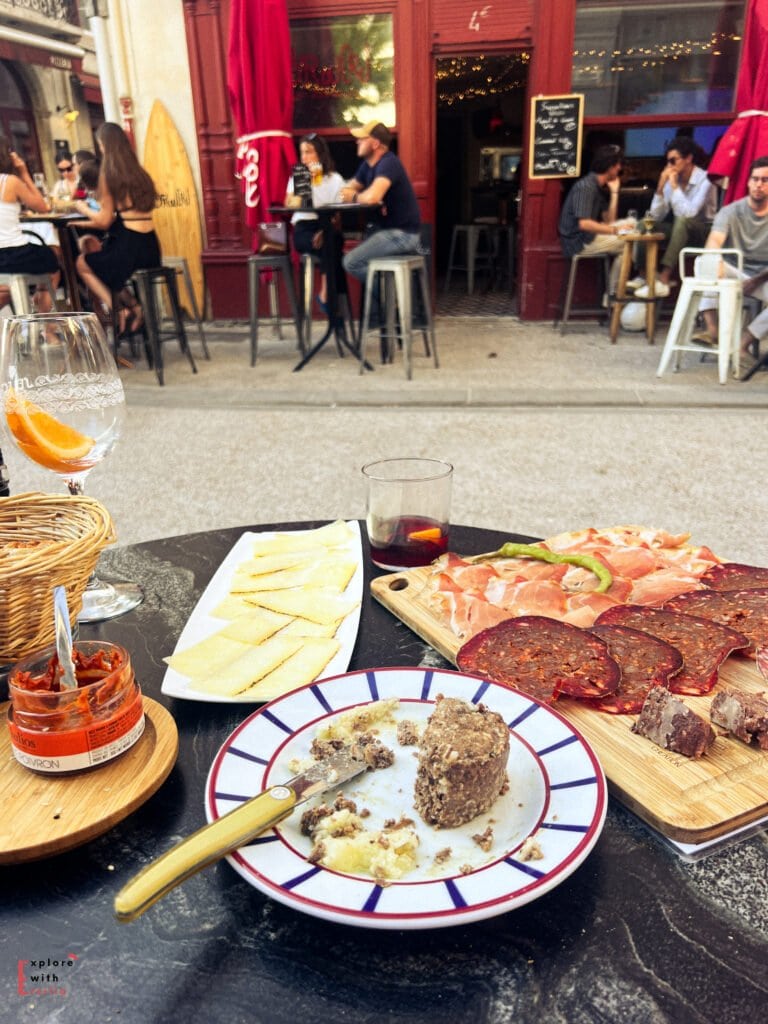
As a transplant to Toulouse, I’ve grown to appreciate the culinary connections between my adopted city and Basque cuisine, but nothing prepared me for understanding just how deeply these traditions are intertwined.
What makes French Basque cuisine so special – and so influential on southwestern French cooking – is a perfect storm of geography, history, and cultural pride. Nestled between mountains and sea, with Spain just across the border, this region’s food tells the story of unique cultural exchanges that have shaped the food culture I’ve come to embrace.
The first thing I noticed was the color – vibrant reds from Espelette peppers, chorizo and tomatoes, deep greens from mountain herbs, whites from fresh sheep cheeses. Even their dishes mirror the red, white, and green of the Basque flag! This wasn’t something I read in a guidebook – it was pointed out to me by Marie, an elderly woman who invited me into her kitchen in a tiny village outside Espelette.
“Our food reflects who we are,” she explained while stirring a pot of bubbling axoa (a traditional veal stew). When I mentioned I lived in Toulouse, she nodded knowingly: “Ah, so you see it then. Your cassoulet, your sausages, your way of serving apéro – they all have a little Basque history in them.”
My Favorite Basque Country Food Experiences
1. The Morning Market Ritual in Biarritz
My first morning in the Basque Country started with an early trip to Les Halles market in Biarritz. The scents of fresh bread, sheep cheese, and cured meats filled the air.
My favorite stop was the cheese stand, where Pierre (the third-generation owner) offered me a slice of Ossau-Iraty to taste. “This one was aged in our cave for 18 months,” he said with pride. “You won’t find this elsewhere.” (well, they always say that, but I find it cute !)
I learned to assemble the perfect picnic here: a crusty baguette from the baker near the entrance, thin slices of Jambon de Bayonne from the butcher who cures his own, and a small pot of black cherry preserves that pairs magically with the sheep cheese. For a sweet treat, I added a slice of gâteau basque from a local patisserie – their cream-filled version was absolutely divine.
If you are going to eat in brasserie over here, chances are you will get something that ressembles my picnic !
2. Discovering the World of Espelette Peppers

Even in August, Espelette showcased its famous red peppers on some building facades – the village’s culinary claim to fame. These peppers aren’t just decorative; they’re the foundation of Basque cooking and have earned prestigious AOC status (like fine wines).
What fascinated me most was learning that piment d’Espelette isn’t actually very spicy – it’s more aromatic than hot, designed to enhance flavors rather than overwhelm them. This revelation explained why the Espelette pepper in my Toulouse spice rack had always seemed milder than expected – it’s meant to be a flavor enhancer, adding depth and complexity to dishes without the burn of other chilies.
A local farmer explained that after harvest, they hand-string these peppers into the distinctive garlands (called “cordes“) before drying them in the sunshine – a traditional process that concentrates their unique flavor. The resulting powder becomes the essential seasoning in countless Basque dishes, from piperade to axoa, replacing black pepper in most traditional recipes. I left with a fresh supply, knowing my cooking back in Toulouse would instantly become more authentically Basque.
3. Rue du Port Neuf: Bayonne’s Sweet Secret
On a narrow cobblestone lane in Bayonne, I discovered the chocolate heritage that’s been flourishing since the 17th century. Rue du Port Neuf houses several historic chocolatiers, established when Jewish artisans fleeing the Spanish Inquisition brought their craft to this Basque city.
At Chocolat Cazenave, a salon dating back to 1854, I experienced their signature chocolat mousseux – thick drinking chocolate topped with hand-whipped foam so dense a spoon stood upright in it, served in delicate pink porcelain. Nearby at Daranatz, established in 1890, I tasted chocolate-espelette pepper bonbons that perfectly married traditional craftsmanship with Basque flavor innovation.
What makes this street extraordinary isn’t just the quality but the concentration of history – a living museum of chocolate craftsmanship that embodies Basque gastronomy’s soul: deep respect for tradition paired with thoughtful evolution.
4. The Art of Gâteau Basque: Maison Adam’s Sweet Legacy
Maison Adam has been creating culinary magic since 1660, when they served macarons at Louis XIV’s royal wedding. While their macarons remain legendary, I was captivated by their gâteau basque – a dessert that embodies Basque culinary philosophy.
The Telleria-Adam brothers (13th generation owners) honor their ancestral recipe – a buttery, shortbread-like exterior traditionally filled with black cherry jam or vanilla cream – while introducing innovative moelleux variations with modern fillings like chocolate and pistachio-raspberry. Each cake features the distinctive crosshatch pattern that marks authentic gâteau basque.
What impressed me most was their commitment to regional ingredients: flour from Ustaritz, free-range eggs from Gers, and milk from Basque farms. One bite explained why this cake became a Basque icon – the perfect balance of crisp exterior and generous filling, embodying a cuisine that respects tradition while embracing thoughtful evolution.
5. Ttoro: The Soul of Basque Seafood
Ducking into a small Saint-Jean-de-Luz restaurant during a sudden downpour, I discovered ttoro (pronounced “tioro”) – a dish that captures the essence of Basque coastal cuisine. What began as humble fishermen’s fare – using whatever remained from the day’s catch – has evolved into one of the region’s most beloved specialties.
My bowl arrived steaming with an aromatic broth the color of sunset, holding a treasure of local seafood – chunks of firm white fish, mussels, tender squid, and large pink shrimp. The first spoonful revealed a depth of flavor that spoke of hours of patient simmering, with the subtle heat from piment d’Espelette warming rather than burning.
The restaurant owner explained that traditional ttoro changes daily based on “whatever the fishermen brought in that morning.” This simple approach embodies the Basque philosophy perfectly: using high-quality local ingredients and respecting traditional techniques to create something greater than the sum of its parts – the maritime soul of Basque gastronomy in a bowl.

Planning your trip to the French Basque Country ?
Here is everything to know : how to get there, where to stay, what and where to eat, the best things to see and to do!
Culinary Treasures You Need To Try
Beyond these experiences, the French Basque Country is filled with culinary treasures that rarely make it into guidebooks but have significantly influenced the food culture of Toulouse and the broader southwest. Here are a few worth seeking out – and connections I’ve discovered between them and my hometown cuisine:
Basque Chocolate in Bayonne
Few visitors realize that Bayonne has been a chocolate capital since the 17th century, when Jewish chocolate-makers fleeing the Spanish Inquisition settled here. The tradition continues in small workshops like Cazenave, where I spent an afternoon learning how they make their thick, rich hot chocolate – a recipe unchanged for generations.
Their specialty, chocolat mousseux, is served with a layer of foam so thick you can stand a spoon in it. Paired with freshly fried churros for dipping, it’s an afternoon ritual I now try to recreate at home (though never quite successfully!).
Kintoa Pork from the Mountains
In the mountain villages, I discovered Kintoa – a heritage breed of Basque pig that grazes freely in the forests, feeding on acorns, chestnuts, and ferns. The meat is nothing like commercial pork – deeply flavored with beautiful marbling that melts when cooked.
At a small farm-to-table restaurant in Sare, I had a simple preparation that changed my understanding of what pork could be – just a grilled chop with a sprinkle of sea salt and Espelette pepper. The farmer who raised the pig was seated at the next table, a beautiful reminder of how short the distance from farm to plate can be in this region.
Ossau-Iraty: The Mountain Gold of Basque Country
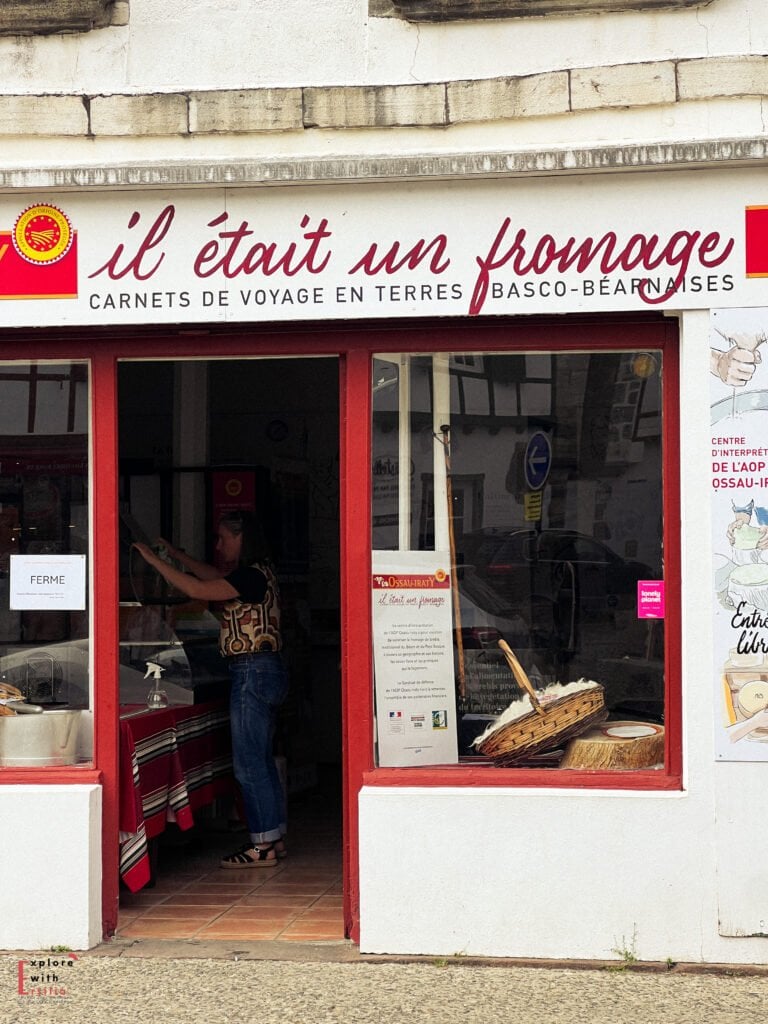
In the rolling Pyrenean foothills, I discovered one of the Basque Country’s most treasured culinary achievements – Ossau-Iraty cheese (fromage de brebis). This semi-hard sheep’s milk delicacy, often called “the farmer’s dessert” for its creamy texture and fruity notes, has been produced in these mountains for over 3,000 years, making it one of the world’s oldest cheeses.
The cheese takes its name from the Ossau Valley and the Iraty Forest, bridging two distinct Basque regions. What fascinated me was learning that many Basque shepherds still practice transhumance – the seasonal movement of sheep to higher mountain pastures – resulting in special summer cheeses with unique flavors from the high-altitude grasses.
What truly elevated my tasting experience was the traditional Basque pairing with black cherry jam from Itxassou. This seemingly unusual combination creates a perfect harmony – the nutty, slightly salty cheese balanced by the sweet-tart cherries. Since returning to Toulouse, I’ve recreated this pairing at my own apéro gatherings, always explaining to friends that this isn’t just cheese and jam, but a taste of Basque culture’s deep connection to their mountains and traditions
When to Visit for Food Lovers
Each season in the Basque Country offers different culinary highlights:
- Spring (April-May): The first asparagus appears in markets, and lamb is at its most tender. Perfect for hiking through mountain villages and enjoying hearty farmhouse meals.
- Early Summer (June): Cherry season in Itxassou! The hillsides bloom with cherry blossoms, and the famous black cherries are celebrated in everything from jams to savory dishes.
- Late Summer (August-September): Pepper harvest begins, and fresh seafood is at its peak. The beaches are crowded, but early morning market visits are still magical.
- Fall (October): My favorite time! The Espelette Pepper Festival transforms the village, and mushroom season brings cèpes and chanterelles to restaurant menus.
- Winter (December-February): Cider house season begins! The ritual of enjoying hearty steak dinners while tasting fresh cider straight from the barrel is a uniquely Basque experience.
The Apéro Connection: From Basque Country to My French Apartment
During my short time in the Basque Country, I had a revelation about the origins of one of my favorite adopted Toulouse traditions. Ever since moving here, I’ve embraced the evening ritual of apéro – that magical hour or two before dinner when friends gather around a wooden board filled with charcuterie, cheese, and small bites accompanied by wine or pastis. I always considered this quintessentially southwestern French, but I discovered something fascinating – many elements of this cherished tradition likely originated in or were heavily influenced by Basque Country!
In Saint-Jean-de-Luz, I found a charming wine bar with a distinctive red facade and matching shutters. Inside, locals were enjoying wooden boards loaded with jambon ibérico, chorizo, Manchego cheese, and small dishes of pâté. The resemblance to my typical Toulouse apéro spreads was striking, but here everything seemed more intentional, more connected to local producers.
“We’ve been eating this way for centuries,” explained the owner when I remarked on the similarity to Toulouse traditions. “The Spanish call it tapas, we call it pintxos, but the idea is the same – small bites, good company, no rush.”
What’s fascinating is seeing how these customs traveled the short distance to Toulouse and transformed along the way. The perfectly arranged platters with chorizo slices, local cheese, and bread that I serve to friends in my apartment? They’re simplified versions of the pintxos culture I experienced in Basque Country. Even our method of serving – wooden boards, small ceramic dishes, casual standing around the kitchen – mirrors what I saw in traditional Basque settings.
Next time you’re enjoying an apéro in southwestern France, look closely at what’s on your plate – you might just be participating in a centuries-old Basque tradition without even realizing it!
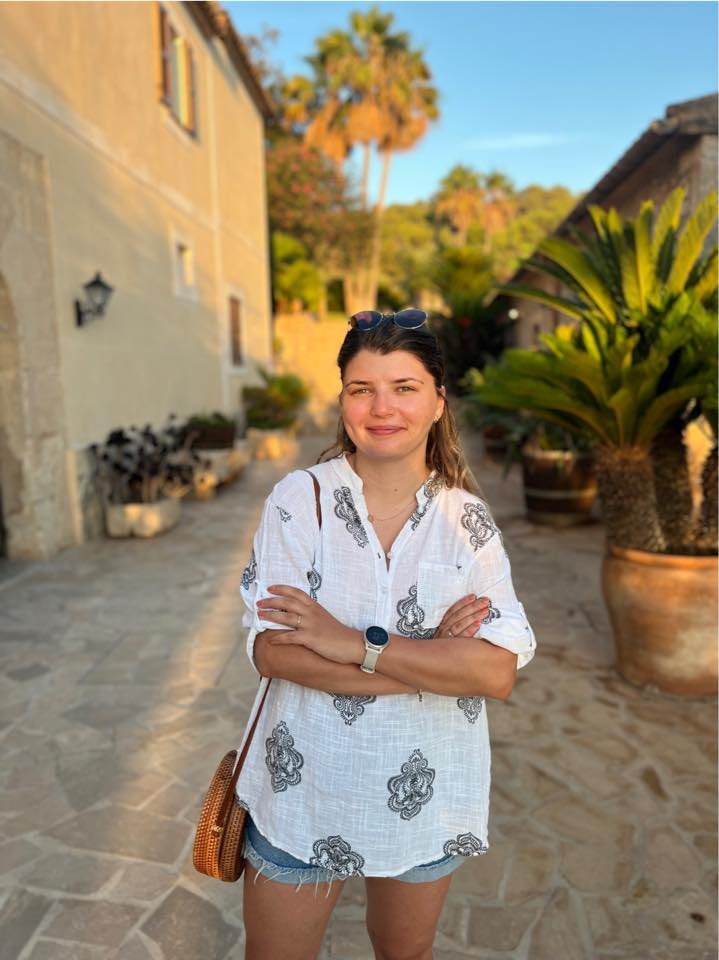
author page / EDITORIAL POLICY PAGE
Hi, I’m Ersilia

Toulouse, France

Originally from Romania

English & French Content
As a Romanian expat living in the heart of southern France, I guide English speakers to discover authentic French experiences without the language barrier. My unique perspective as both a local and an expat allows me to share insider tips, cultural insights, and practical advice that you won’t find in typical guidebooks.
My Expertise:
- French life and culture navigation
- Hidden gems across French regions
- Eastern vs Western European perspectives
- Local insights and practical travel tips
Blog Socials
Personal Pages







